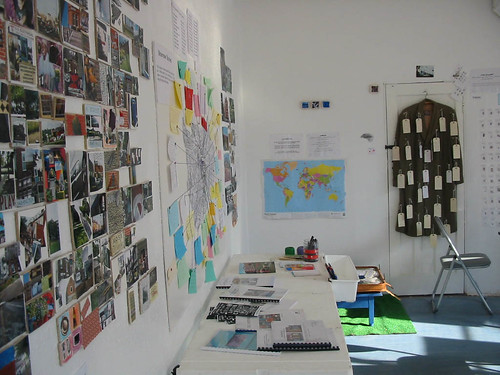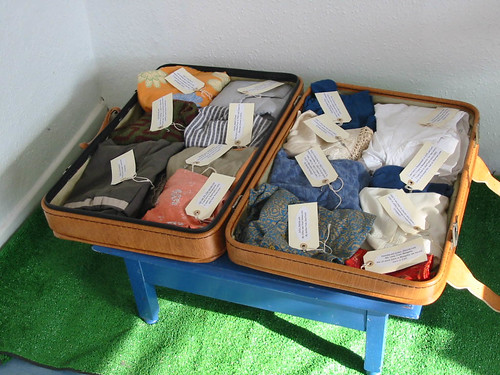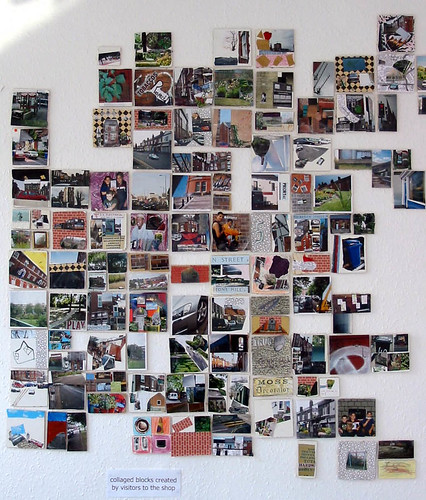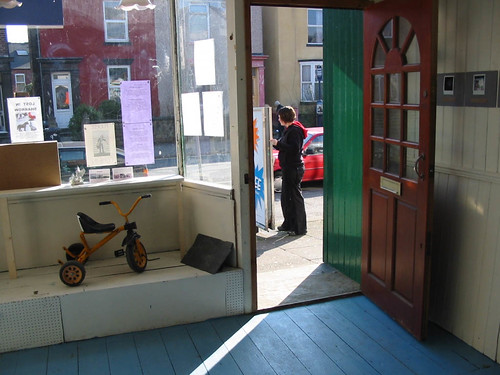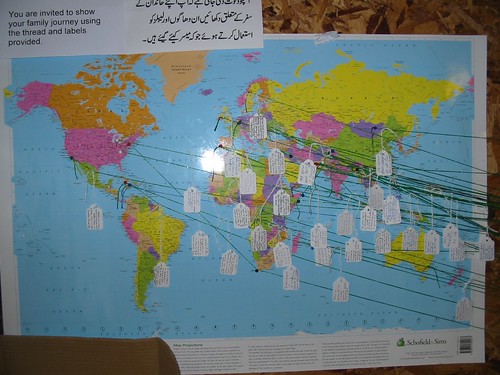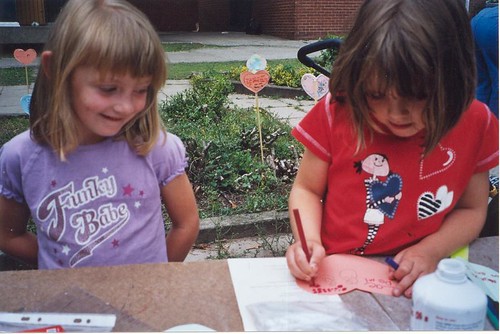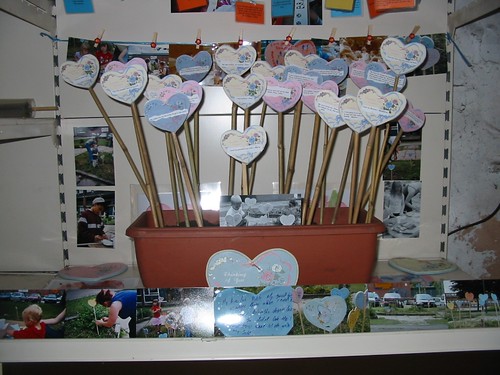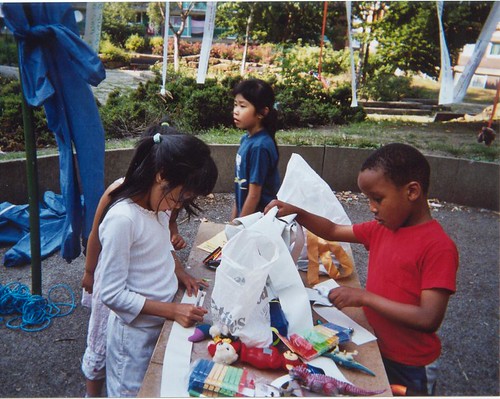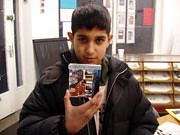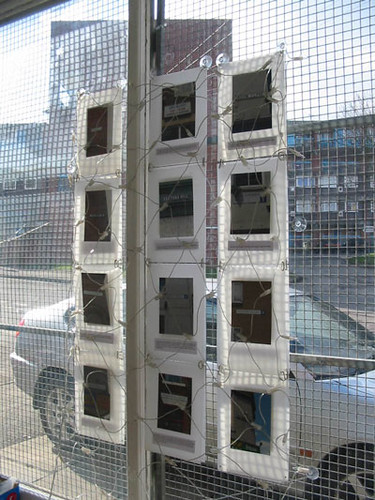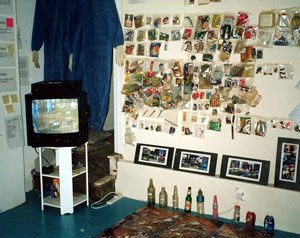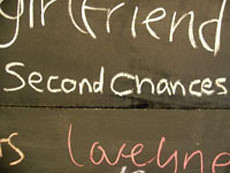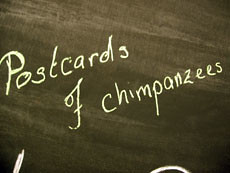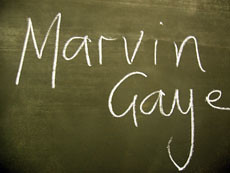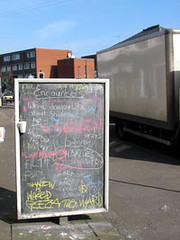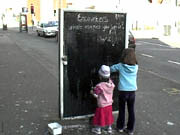Sharrow Shops 2003-2005
Encounters take up residence in disused shops and other spaces working with local people and visitors to create multi authored artworks exploring the themes of people, place and community.
The shops become meeting places in which to collect and exchange experiences, memories, objects, journeys and thoughts about everyday life in an area. We use performance, film, photography, visual art and text to collect material and create interactive and evolving displays within the shop.
ENCOUNTERS @ Wostenholm Road, Sharrow, Sheffield.
April & May 2003
The first Encounters shop was a collaboration between Ruth Ben-Tovim and Trish O’Shea funded by the Arts Council of England in Yorkshire. It was designed to creatively explore the local area of Sharrow in Sheffield where we both lived, and the relationship between ourselves as artists and other local residents.
ENCOUNTERS @ Lansdowne, Sharrow, Sheffield (Pop’s mini market, 106-108 Sharrow Lane).
July & August 2003
A commission by Yorkshire Artspace and Sharrow Community Forum focused on developing new audiences on the Lansdowne Estate. The aim was to build on the success of the first shop project, and it took place in the empty Pop’s mini-market on Sharrow Lane.
ENCOUNTERS @ 127 Club Garden Road, Sharrow, Sheffield.
November 2004 - March 2005
Encounters at Club Garden Road built upon the first two shop projects and involved a larger team of artists, taking place over a longer period of time. Hundreds of people took part and the project was funded by The Arts Council, Home Office Refugee fund, Local Network Fund and Neighbourhood renewal fund.
Below are some of the activities and project strands that ran throughout the three shops.
LOST AND FOUND
This was an ongoing activity that sought and found ‘hidden treasures’ on the streets, which had been lost or discarded by other people. In the first shop, objects were collected and displayed in sample bags in the shop window, labeled with the place they were found, the date and time of discovery. As the display grew, local people began to bring objects they had found in the area. In the second shop, objects were displayed on shelves, along with photographs of where they were found. In the third shop, we continued to collect objects, arranging and categorising them in a large shop display counter.
Work with toy farmyard animals began when we were walking in Sharrow and came across first a miniature cow, then a pig, then some chickens and finally a small female figure with a bucket. We decided to share the experience, giving others a chance to discover the delight in finding these objects. We placed a selection of plastic toy farm animals around the area, along with instructions of how the finder could return the animal to the shop. People of all ages and backgrounds brought the toys back, and received a small artwork as a reward.
SHARROW STORIES
A large map of Sharrow was displayed on the wall and visitors were invited to mark particular places with miniature flags, along with a memory or story associated to that place. Sharrow is a diverse area and we wanted to unearth and bring together individual stories and everyday human experiences that happen within shared spaces. The work viewed as a whole reveals the universal stories of hope, fear, love, sadness, anger, loss, grief; all of which could either define or transcend age, culture and social status.
Click here to see transcribed stories collected at the third shop in Club Garden Road.
JOURNEYS
Sharrow is home to a very culturally diverse community, with many people who have settled from different countries for a variety of different reasons. We were interested in creating a visual representation of the journeys that some people and their families had made.
Click here to see transcribed journeys collected at the third shop in Club Garden Road.
Using a map of the world, the UK and Sharrow we invited people to chart where in the world they had traveled from, where in the UK they had moved to and whereabouts in Sharrow they now lived. Using different coloured thread and pins people marked out their journey across the maps. Using small luggage labels we wrote the persons name, address and the year of their journey. A suitcase was filled with neatly folded clothes and on each piece of clothing was the information about different peoples journey.
SHARROW SHOPKEEPERS
To celebrate becoming shopkeepers for the first time at Wostenholme Road, we introduced ourselves to shopkeepers in the area. The aim was to ask them questions, take a photograph of them in their shop and ask them to donate an object that reflected what they sold. Over forty shopkeepers took part and the display in the Encounters shop reflected the huge diversity of traders in the locality.
The questions we asked them were:
What makes you smile?
What annoys and/or upsets you?
What would improve your life in Sharrow?
What does it mean to you to serve people?
THE ARCHAEOLOGY OF LITTER
This part of the project focused on the issue of litter. We selected an area of Sharrow for ‘excavation’ and dressed in protective clothing and masks. The archaeological site was divided into fifteen sections and photographed, and carefully the litter was removed, placed into sample bags and labeled. The whole process was recorded on film, and artists used dictaphones to verbally record each item found.
The area was recreated as an installation in the shop, which displayed the bagged litter, the looped film and the artists’ recordings. Lists of the litter and street names in Sharrow were written on two of the protective suits. On the final day of the project we created a large circle of gravel and planted flowers on the archeological site, along with white plantmarker sticks onto which we had written items of litter found.
THE ART OF GRAFFITI
We photographed examples of wall art and graffiti in the area of Sharrow and these images were recreated and presented back to the shop visitors. Twenty images were digitally created and transferred onto small wooden blocks that were displayed at the shop. The intention was to recreate the graffiti images and encourage people to view them in a different way.
COLLECTING ACTIVITIES
We decided to take Encounters out to residents and deliver work very close to where people lived. Dressed in blue suits with a ‘collector’ sign on our backs, we ventured into specific neighbourhoods’.
We asked people for stories about LOVE, and created an installation in a small derelict garden area. Wooden hearts were put on sticks and we asked people to leave a comment, story or memory about love and then plant the stick in the soil.
We asked people for stories about PLAY, using a drying area near the rose bushes in the middle of the estate. We put a washing line between the drying poles and on long sheets of fabric we asked people to leave a comment, story or memory about play and then hang it on the line. Abandoned toys were also at the site and we asked people to attach these to the line.
THE BLACKBOARD
We transformed the free standing advertising hoarding outside one shop into a blackboard, on which we wrote different questions for people to respond to every few days.
We asked:
What makes you smile?
What annoys or upsets you?
What do you fear?
What would improve life in Sharrow?
Who or what do you admire?
What are the best bits about Sharrow?
What do you feel about the war?
Who or what do you miss?
PEOPLE AND PLACES
On taking over the shop in Sharrow Lane, we were left with many shop items, including a cigarette display case. The display unit, with its different sections and rows, made us think of the structure of the Lansdowne estate. We therefore used the case to house an evolving collection of photographs which would reflect the local area and the people who lived there.
The collection of photographs built up and grew throughout the project. We took photos of visitors, and went out into the neighbourhood. We also worked with families, and gave disposable cameras to groups of children who regularly visited the shop and asked them to take pictures of the area.
The display was largely made up of people and visitors to the shop, interspersed with images of the texture, pattern and shape of the estate and neighbouring streets.





